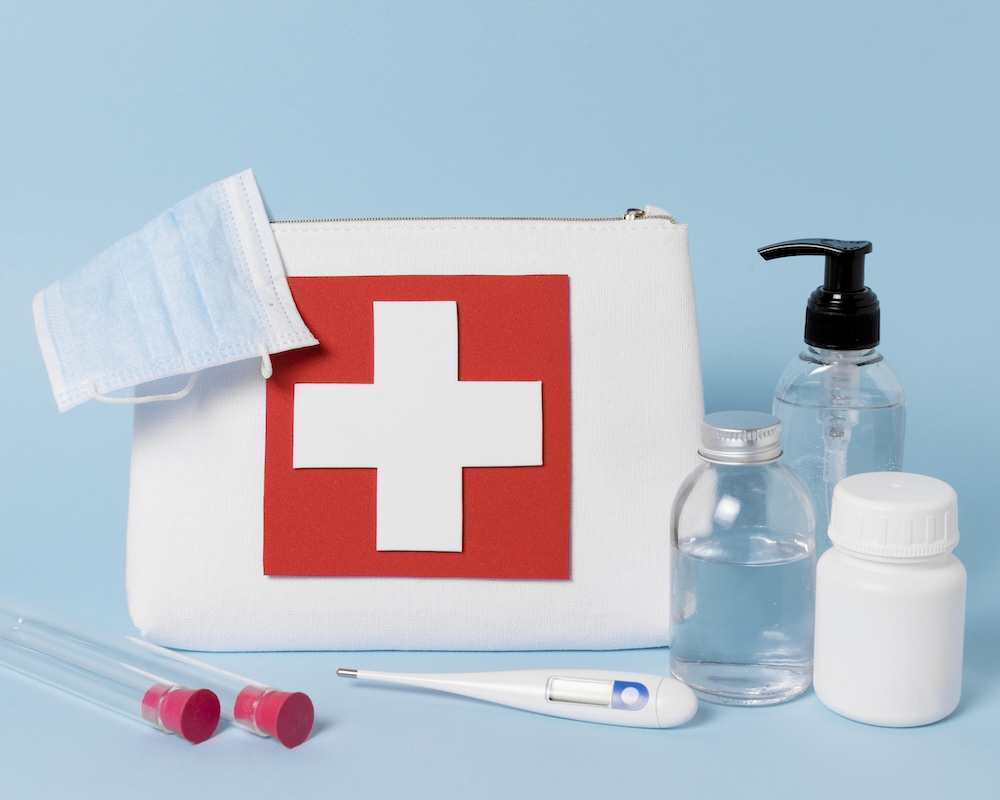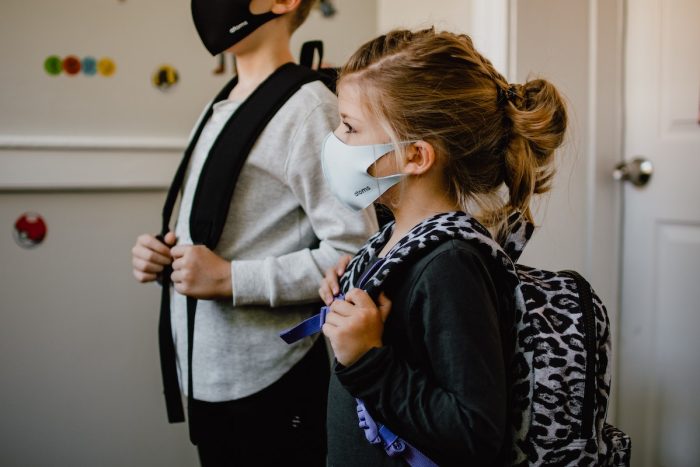Today’s youth are all too familiar with violence and trauma, and as a result, Psychological First Aid (PFA) was developed to assess a child’s mental health symptoms and provide interventions in the aftermath of a traumatic experience. While there are a number of ways to screen and intervene with youth following psychological trauma, Psychological First Aid is a practical and intuitive approach that can be adapted to a number of different settings and circumstances. PFA training and certification is now available online through the
NCTSN Learning Center.
It is estimated that 5 million children in the U.S. each year are affected by psychic trauma, with millions more living in environments wrought with domestic violence.
- Greater trauma exposure, perception of life threat, and personal injury are all associated with increased rates of Post-Traumatic Stress Disorder (PTSD). Children with PTSD are more likely to exhibit maladaptive behaviors in adolescence (including drug abuse, risky sexual activity, and anti-social behaviors).
- They also have an increased risk of suicide attempts, dissociation, major depression, and impairment in global emotional functioning.
- The DSM-5 includes expanded PTSD criteria, which may facilitate earlier identification and provision of support for children displaying signs of acute stress reactions. The new section,
Trauma- and Stressor-related disorders, encompasses PTSD, Acute Stress Disorder, Adjustment Disorder, Reactive Attachment Disorder, Disinhibited Social Engagement Disorder, and Other Specific Trauma-related disorders, along with a choice of additional qualifiers to more specifically describe the nature of the condition .
- This change is due to increased recognition of the extreme variability in individual responses to trauma. Even with the expanded criteria, PTSD continues to be one of the most challenging disorders to diagnose accurately in children and adolescents.
- The DSM-5 also includes alternative criteria for diagnosing PTSD in children under 6 years old, as young children might display atypical symptoms of PTSD. These symptoms include reenactment of trauma-specific themes or experiences during playtime, which may not even seem to be causing the child any distress. The DSM-5 also recognizes that PTSD symptoms can change over time, and full diagnostic criteria may not be met until many months after the trauma (if criteria is met >6 months after the trauma, it is called PTSD with delayed expression). Acute Stress disorder refers to persistence of stress responses for up to 1 month, with significant impairment in a child’s everyday functioning. If symptoms persist beyond one month, the child meets criteria for PTSD.
Children can develop PTSD in response to a number of traumas or stressors—ranging from natural disasters to domestic violence, physical and/or sexual abuse, death of a loved one, or even learning about trauma of a parent without directly experiencing or witnessing the trauma. Acute stress reactions can manifest in all different ways, but common behaviors include anhedonia, hypervigilance, nightmares, flashbacks, and avoidance of certain triggers. These symptoms are more likely to go unnoticed in young children, particularly in the wake of natural disasters or widespread crises.
There is mixed literature about the possibility that children with PTSD display “natural recovery” over time. Some studies have found a decrease in the overall percentage of children qualifying for a diagnosis of PTSD as more time elapses after a trauma.
- Other studies support the opposite—concluding that symptoms of PTSD persist over time.
- Individual traits, such as resilience and hardiness, have been proposed as protective factors against development of PTSD, but these traits are difficult to measure reliably. A more universally accepted finding is that strong family support improves a child’s prognosis after trauma. Children who are nurtured by their caregivers display more resilience in the face of adversity.
In addition, early intervention following trauma decreases a child’s likelihood of suffering long-term psychiatric symptoms. However, there are many barriers to early identification of high-risk children and early intervention after traumatic experiences. The shortage of trained mental health professionals for children is certainly one factor, but the lack of screening for mental health conditions also allows high-risk children to fall through the cracks. Many children suffer in silence for years due to lack of recognition by caregivers, parents, teachers, and primary care pediatricians. Even the few children recognized as having psychiatric disturbances often do not receive treatment because of resistance to mental health care. This could be due to stigma perceived by the children or by their parents. Other barriers to treatment include lack of access, lack of insurance, or lack of transportation.
- The lack of training in crisis intervention skills has led to a dire shortage of qualified responders in times of disaster.
- Natural disasters inevitably lead to a surge in the demand for mental health support
- which exacerbates the discrepancy between supply and demand of mental healthcare. Children may suffer in silence for years, and providers too often miss opportunities to identify and intervene with children and youth suffering from trauma-related conditions
- The instability in today’s world has led to an increased rate of emotional problems in today’s youth. Six months after 9/11, an estimated 75,000 New York City public school children suffered from PTSD
- though this figure may be under-estimated given the heterogeneity of PTSD symptomatology in children.
The goal of PFA is to limit distress and negative health behaviors in the aftermath of a traumatic event. Proper use of PFA can empower the survivor, and encourage self-efficacy and resilience in the face of adversity.
- PFA is not a substitute for counseling or therapy, but is simply intended to be a way to identify patients needing extra support after a traumatic event. The main goal of PFA is to minimize isolation, reduce stress-related responses, and promote self-sufficiency. Focusing on the patient’s strengths can help them to identify the qualities they possess that will help them move forward with hope.
PFA is shown to reduce acute distress and can increase a child’s resilience in the wake of a tragedy or trauma. Much like a Band-Aid is placed over a cut to prevent further damage, PFA is the “quick-fix” that can be put in place before a child can get stitches. PFA aims for immediate stabilization, but is not intended to diagnose or treat mental health disorders. It is merely a skill set that can be taught quickly, increasing the number of people trained to provide compassionate care in times of crisis.
The skills necessary for delivery of effective PFA are different from the skills needed to provide psychiatric care. This is because the goals of PFA are different from the goals of counseling. PFA is intended to stabilize and mitigate acute distress in the immediate aftermath of a traumatic event, while psychotherapy is a longitudinal process requiring introspection and self-analysis. It is neither practical nor effective to provide psychotherapy in the immediate aftermath of a trauma, and the survivor is unlikely to respond to such attempts until their basic needs are met. In fact, attempting to provide psychotherapy too soon after a traumatic event can lead to a breakdown of trust between the provider and the patient.
- Much of the therapeutic value of Psychological First Aid lies in merely providing a comforting presence, showing compassion for the patient, and listening to what the patient needs most in the immediate aftermath of a trauma.
The 5 evidence-informed principles (safety, calmness, connectedness, self-efficacy, and hope) are based on the observation that survivors often experience fear, anxiety, and a need to connect with others after a traumatic experience. They may feel extremely overwhelmed after experiencing the trauma, and often express hopelessness about their ability to resume a normal life. PFA’s 5 basic guiding principles progress logically, starting with the most fundamental need—safety. Without feeling safe, one cannot feel calm, connected, self-efficacious, or hopeful. Therefore, it is important to address the 5 guiding principles sequentially, starting with the fundamental need of safety.
Children and adolescents tend to worry most about their personal safety or the safety of their family. In situations involving loss of a loved one, a primary care provider should assess the child’s needs and provide a safe environment for the child to grieve. Often the best way to start the conversation is with an open-ended question, or invitation to the survivor to talk. The PCP should practice reflective listening, a communication strategy involving 2 key steps: seeking to understand the patient’s idea, and then offering the idea back to the speaker to confirm you have correctly and completely understood the patient. Throughout the encounter, listen to the patient and show that you care by maintaining good eye contact. Reflect and legitimize their emotions, and assure them they are not alone. Be wary of providing solutions or promising to resolve any safety concerns that are beyond your control. Ensure privacy and give the child your full attention. Simple efforts to make the patient more physically comfortable can go a long way—for example, offering a blanket, tissue, or simply a cup of water.
Each of the 8 core actions of PFA should be approached in the context of the 5 guiding PFA principles: safety, calmness, connectedness, self-efficacy, and hope.
8 Core Actions of PFA
- Contact and Engagement: First, introduce yourself and explain your role. Elicit specific concerns, remain non-judgmental, and be a reflective listener.
- Safety and Comfort: Enhance immediate and ongoing safety, provide physical and emotional comfort. Use a calm, soothing voice, and offer reassurance. Guide the patient through grounding/relaxation techniques.
- Stabilization (if needed): Stabilize Emotionally-Overwhelmed Survivors. Observe individuals for signs of being disorientated or overwhelmed
- Information Gathering: Find out if there are concerns about an ongoing threat, if the patient has a history of prior trauma/loss, and if the patient has any thoughts of harming self or others.
- Practical Assistance: Identify what the patient needs immediately. Also consider offering items to increase comfort (i.e. blankets, tissues, pillows, warmth).
- Links to Social Supports: When possible, encourage interaction and support seeking from family members. Strong family support is the most powerful predictor of a youth’s resilience after a traumatic event.
- Information on Coping: Educate the patient (and family, if possible) about the variety of possible acute stress reactions, and normalize these responses as part of the recovery process. Encourage social contacts and if possible, arrange for family support.
- Information on Available Services: Promote continued care by offering contact information and handouts to appropriate services. Referrals can range from local disaster agencies to mental health services, medical treatment, clergy/religious leaders, or family therapy.

